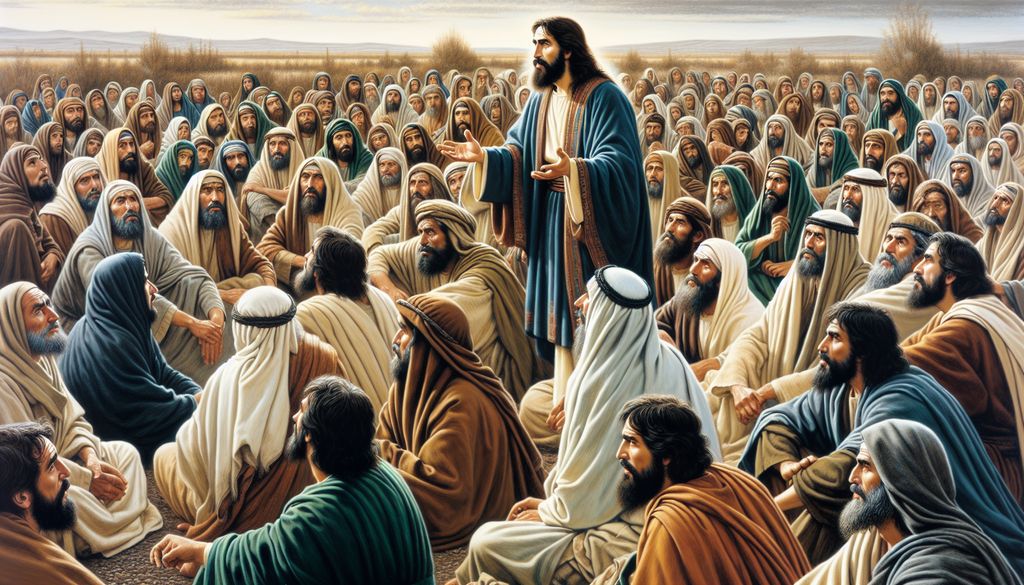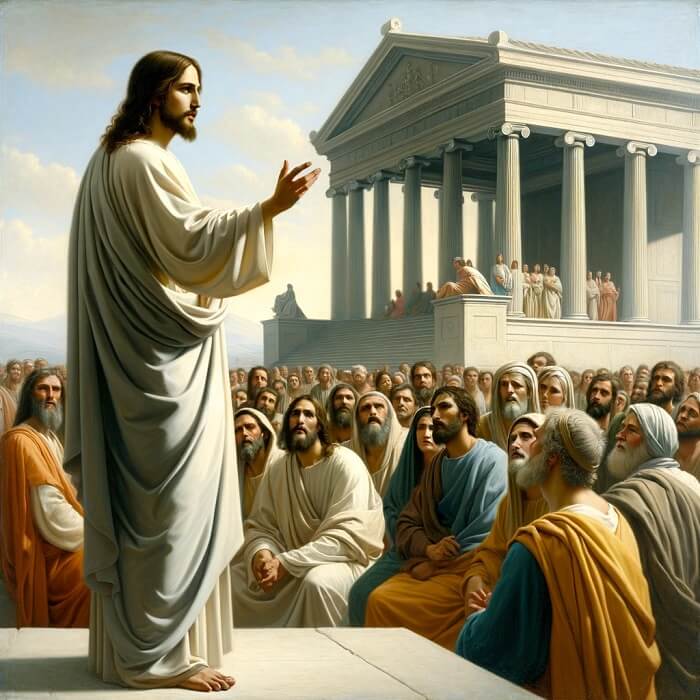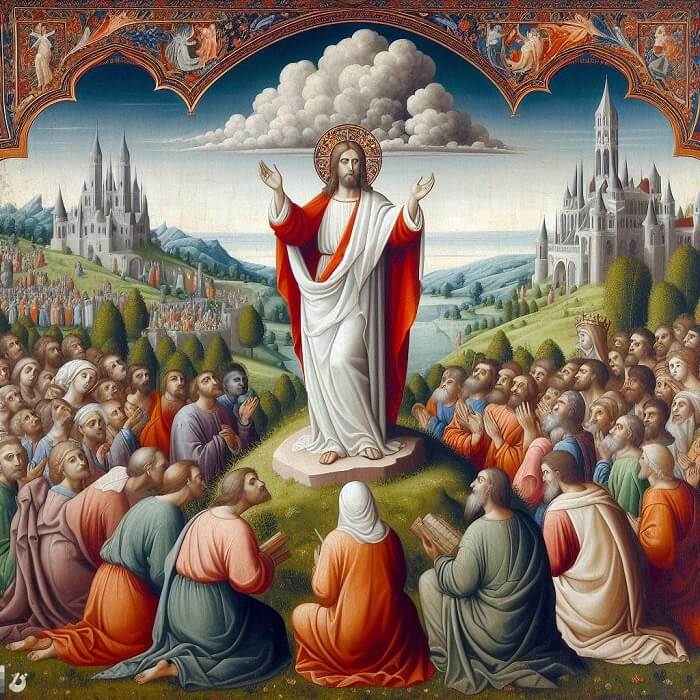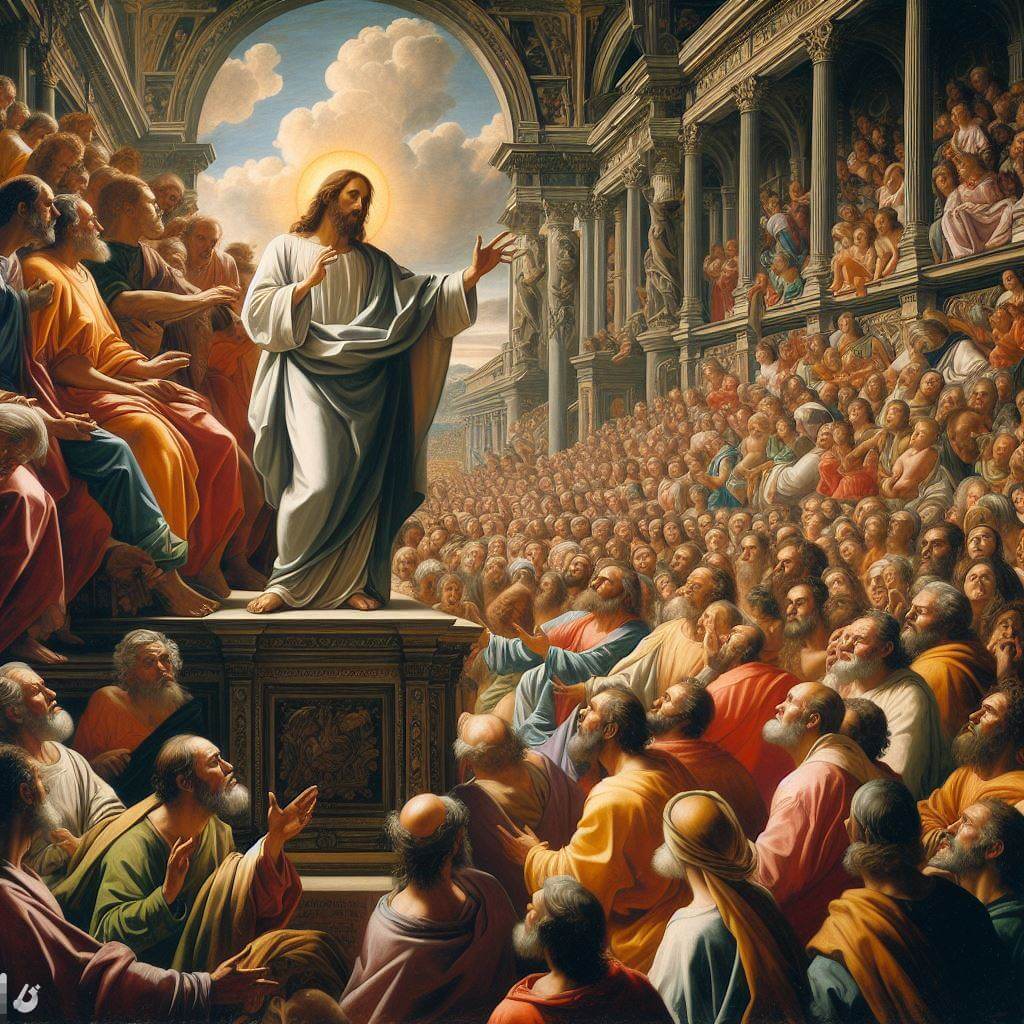In the life of Jesus, His sermons were not only filled with profound teachings but also accompanied by captivating pictures that left a lasting impact on His listeners. From the Sermon on the Mount to the parables and miracles, each moment of Jesus’ preaching revealed His divine authority, compassion, and revolutionary teachings. In this article, we will explore some of the most powerful pictures of Jesus preaching and uncover the key takeaways that continue to inspire and challenge us today.
Key Takeaways
- Jesus’ teachings in the Sermon on the Mount call believers to a radical life of blessedness and righteousness.
- Believers are called to be salt and light in the world, influencing others through their actions and character.
- Jesus’ command to love our enemies challenges us to extend grace and forgiveness to those who have wronged us.
- The parables teach profound truths through relatable stories, inviting listeners to reflect and apply the lessons to their lives.
- Jesus’ miracles demonstrate His power and compassion, revealing His authority over nature, sickness, and death.
The Sermon on the Mount: Jesus’ Most Famous Preaching

The Beatitudes: A Radical Call to Blessedness
The Beatitudes are a collection of teachings by Jesus that are known as the opening statements of the Sermon on the Mount. These teachings outline the qualities and attitudes that lead to true happiness and blessedness. Jesus begins by saying, ‘Blessed are the poor in spirit, for theirs is the kingdom of heaven.’ This statement emphasizes the importance of humility and recognizing our need for God. It reminds us that true happiness comes from a deep relationship with God rather than material possessions or worldly success.
Salt and Light: The Influence of Believers
In his sermon, Jesus used the metaphor of salt and light to describe the influence that believers should have in the world. Salt is a common seasoning that enhances the flavor of food. In the same way, believers are called to bring flavor and goodness to the world around them. They are to be a positive influence, bringing joy, kindness, and love to others. Light is a symbol of guidance and illumination. Believers are called to shine their light, to be a source of truth and righteousness in a world filled with darkness and confusion. By living out their faith and following the teachings of Jesus, believers can make a difference and impact the lives of those around them.
Love Your Enemies: A Revolutionary Commandment
In one of Jesus’ most radical teachings, he commands his followers to love their enemies. This goes against the natural human inclination to seek revenge or hold grudges. Jesus challenges his listeners to extend love and kindness even to those who have wronged them. This revolutionary commandment emphasizes the importance of forgiveness and reconciliation. By loving our enemies, we break the cycle of hatred and violence, and instead, promote peace and understanding.
Parables: Teaching Truths through Stories

The Parable of the Sower: Receptive Hearts and Fruitful Lives
The Parable of the Sower is a powerful teaching by Jesus that illustrates the different responses people have to the message of God. In this parable, Jesus compares the Word of God to seeds that are sown on different types of soil. Some seeds fall on the path and are quickly devoured by birds, representing those who hear the message but do not understand it. Other seeds fall on rocky ground and sprout quickly, but wither away because they have no root, symbolizing those who receive the message with joy but have no depth of faith. Still, other seeds fall among thorns and are choked by the cares of the world, representing those who hear the message but are distracted by worldly desires. Finally, some seeds fall on good soil and produce a bountiful harvest, representing those who hear the message, understand it, and bear fruit in their lives.
The Parable of the Prodigal Son: The Father’s Unconditional Love
The Parable of the Prodigal Son is a powerful story that illustrates the unconditional love of a father for his wayward son. In this parable, a young man asks his father for his share of the inheritance and then squanders it all in a distant country. When he realizes the error of his ways, he decides to return home and ask for forgiveness. The father, filled with compassion, welcomes his son back with open arms and celebrates his return. This parable teaches us about the boundless love and forgiveness of God, who is always ready to welcome us back into His embrace when we repent and turn to Him.
In this parable, we see the contrast between the father’s love and the older brother’s resentment. The older brother becomes angry and refuses to join in the celebration when he learns that his younger brother has returned. This highlights the theme of forgiveness and the need to let go of bitterness and resentment. It reminds us that God’s love is not based on our actions or worthiness, but on His grace and mercy.
Key Lessons from the Parable of the Prodigal Son:
- God’s love is unconditional and forgiving.
- We can always turn to God for forgiveness and restoration.
- We should let go of bitterness and resentment towards others.
Remember, no matter how far we have strayed, God’s love is always waiting for us with open arms.
The Parable of the Good Samaritan: Compassion in Action
The Parable of the Good Samaritan is a powerful story told by Jesus to illustrate the importance of showing compassion and love to others. In this parable, a man is beaten and left for dead on the side of the road. Several religious leaders pass by without helping, but a Samaritan, who was despised by the Jews, stops to assist the injured man. This story teaches us that true compassion knows no boundaries and that we should always be ready to help those in need.
Miracles: Demonstrating God’s Power and Compassion

The Healing of the Blind: Restoring Sight and Faith
In one of Jesus’ remarkable miracles, he restored sight to a blind man, not only physically but also spiritually. The blind man, who had been begging by the roadside, cried out to Jesus for mercy. Jesus, moved by compassion, touched the man’s eyes and said, ‘Receive your sight; your faith has healed you.’ Instantly, the man’s eyes were opened, and he could see for the first time in his life. This miraculous healing not only brought physical restoration but also deepened the man’s faith in Jesus as the Son of God.
The Feeding of the Five Thousand: Abundance from Scarcity
The Feeding of the Five Thousand is a miraculous event where Jesus multiplies five loaves of bread and two fish to feed a large crowd of people. This miracle demonstrates Jesus’ power over scarcity and his ability to provide abundantly. The story is found in all four Gospels of the New Testament, highlighting its significance. The event took place in a remote location, and the disciples were concerned about how to feed such a large crowd. However, Jesus took the small offering of bread and fish, blessed it, and distributed it to the people. Miraculously, everyone was fed, and there were even leftovers. This miracle not only satisfied the physical hunger of the people but also symbolized Jesus as the bread of life, providing spiritual nourishment and sustenance.
The Calming of the Storm: Jesus’ Authority over Nature
In this powerful miracle, Jesus demonstrates his authority over nature by calming a raging storm. The disciples, who were experienced fishermen, were terrified as the waves crashed against their boat. But Jesus, in his divine power, rebuked the wind and the waves, and immediately there was a great calm.
This miracle not only showed Jesus’ control over the forces of nature, but it also revealed his compassion for his disciples. Despite their fear and doubt, Jesus was with them in the midst of the storm, providing comfort and protection.
This event serves as a reminder that Jesus has power over all aspects of creation, including the storms of life that we may face. Just as he calmed the physical storm, he can bring peace and tranquility to the storms in our hearts and minds. We can find comfort and security in knowing that Jesus is always with us, guiding us through the challenges of life.
The Sermon in Jerusalem: Confronting Religious Hypocrisy

Woes to the Pharisees: Exposing False Piety
In this powerful sermon, Jesus confronts the religious hypocrisy of the Pharisees. He exposes their false piety and reveals the true nature of their hearts. Jesus warns the people not to follow their example, for they are more concerned with outward appearances than with genuine righteousness. He calls them out for their pride and self-righteousness, reminding them that true piety comes from a humble and contrite heart. Jesus teaches that it is not enough to simply follow the rules and rituals; true righteousness requires a transformation of the inner self.
The Widow’s Offering: Sacrificial Giving
The Widow’s Offering is a powerful story that highlights the importance of sacrificial giving. In this story, Jesus observes people putting their offerings into the temple treasury. Many rich people give large sums of money, but then a poor widow comes and puts in two small coins, which is all she has. Jesus praises the widow, saying that she has given more than all the others because she has given out of her poverty, while the others have given out of their abundance. This story teaches us that true giving is not measured by the amount we give, but by the heart and sacrifice behind it.
The Cleansing of the Temple: Zeal for God’s House
After Jesus entered Jerusalem, he went to the temple and found people buying and selling goods. He was filled with righteous anger and overturned the tables of the money changers and the seats of those selling doves. Jesus said, ‘My house shall be called a house of prayer, but you have made it a den of thieves.’ This act of cleansing the temple demonstrated Jesus’ zeal for God’s house and his desire for it to be a place of worship and reverence.
In this powerful moment, Jesus showed his authority and passion for the things of God. He wanted to restore the true purpose of the temple and remove anything that hindered people from experiencing the presence of God. Jesus’ actions challenged the religious leaders and called them to examine their own hearts and motives.
Key takeaway: Jesus’ cleansing of the temple reminds us of the importance of honoring and respecting God’s house. It serves as a reminder to us to keep our hearts pure and focused on worshiping God, rather than being consumed by worldly pursuits.
Here is a table summarizing the events:
| Event | Description |
|---|---|
| Jesus enters the temple | Finds people buying and selling goods |
| Jesus overturns tables | Expresses his anger and frustration |
| Jesus calls the temple a house of prayer | Highlights the true purpose of the temple |
| Jesus challenges the religious leaders | Calls them to examine their hearts and motives |
In conclusion, the cleansing of the temple by Jesus was a powerful demonstration of his zeal for God’s house. It serves as a reminder for us to prioritize worship and reverence in our own lives and to remove anything that hinders our relationship with God.
Conclusion
In conclusion, the divine sermon of Jesus preaching is a captivating experience that leaves a lasting impact on its audience. Through powerful words and compelling imagery, Jesus conveys timeless messages of love, compassion, and redemption. The captivating pictures of Jesus preaching serve as a reminder of the profound impact he had on the lives of those who heard him. Whether it is the Sermon on the Mount, the Parables, or his teachings in the synagogues, Jesus’ words continue to inspire and guide people today. The divine sermon is a testament to the enduring power of his message and the transformative effect it has on individuals and communities.










Leave a Comment